How to Install a Glue-Up Shower Enclosure

Last updated May 1, 2025
Replacing an old shower with a new glue-up shower surround may seem like a daunting task. However, with the right tools and a little time, you can tackle this DIY project and learn to how to install a shower surround like a professional.
Difficulty:
Intermediate
Duration:
Over 1 day
Table of Contents
Consider Installation Options
Get the Bathroom Ready
Mark a Level Line
Prep the Walls
Plan Out the Shower
Trim the Panel
Consider Installation Options
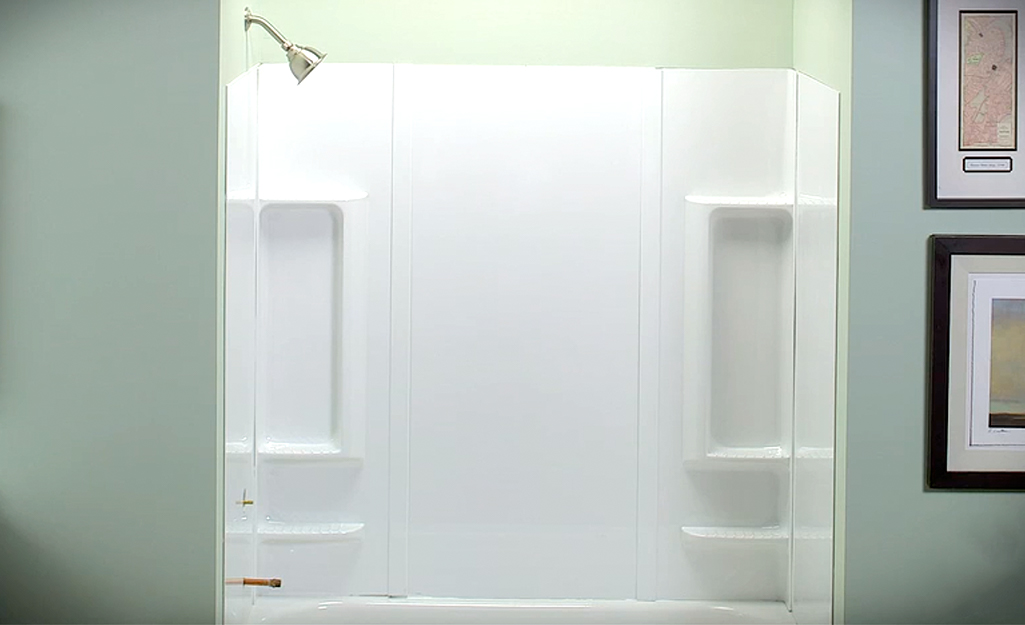
Shower wall panels may be molded into a U-shape as a single unit, which is most often used with new construction. Alternatively, a series of separate interlocking wall panels that install in a sequence to form a watertight seal are often used in remodels. These glue-up enclosures with interlocking wall panels consist of three to five sections. The individual wall panels overlap each other to compensate for different dimensions and out-of-square walls.
Glue-up shower walls and surrounds are available as shower surrounds or as tub surrounds; the basic difference between the two is the height. Tub surround units work with an existing tub. Shower enclosures work with a shower pan and are taller than tub surround wall panels. The project detailed in this guide assumes your old shower wall has been removed and you’re renovating your shower alcove with interlocking panels. It also assumes the floor has been prepared and the shower pan or tub has been installed. As you work on your project, be sure to follow any manufacturer instructions that come with your shower wall kit.
Tip: Glue-up shower stalls and kits should only be installed over moisture-resistant drywall or another similar solid surface like cement board. They’re not recommended for use over existing tile, plywood or wallpaper. If fixtures are already installed in your bathroom, turn off the water feeding the shower valve before getting started.
Get the Bathroom Ready
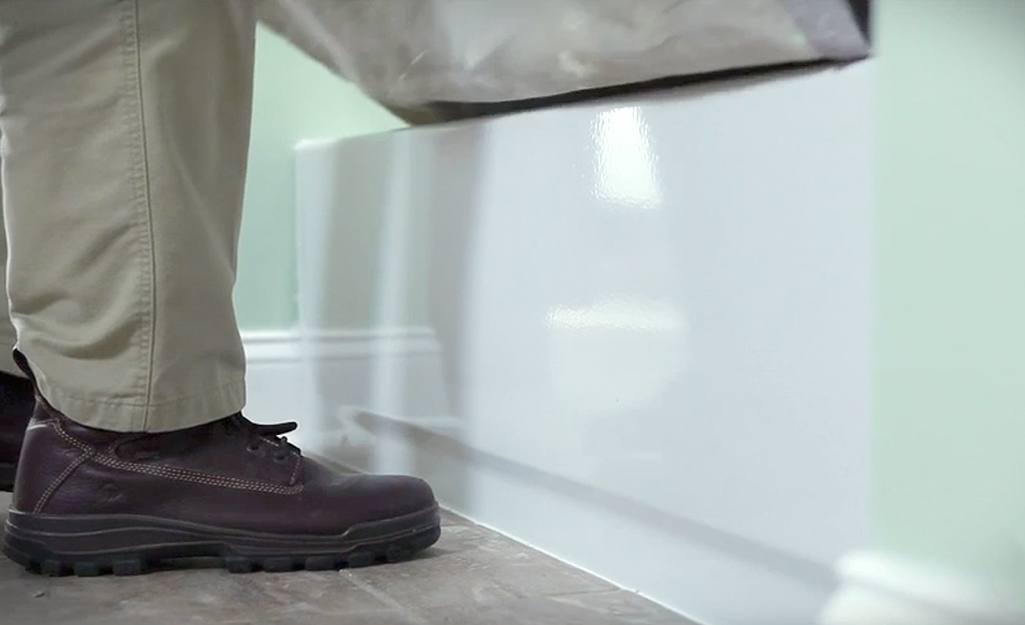
- Place a drop cloth or piece of cardboard in the shower pan or tub to protect the finish from chips and scratches as you work.
- Take off the shower handle and trim cover and spout. There are a few different types of spouts – this one twists off, but other spouts may have a set screw that needs to be loosened first.
Mark a Level Line
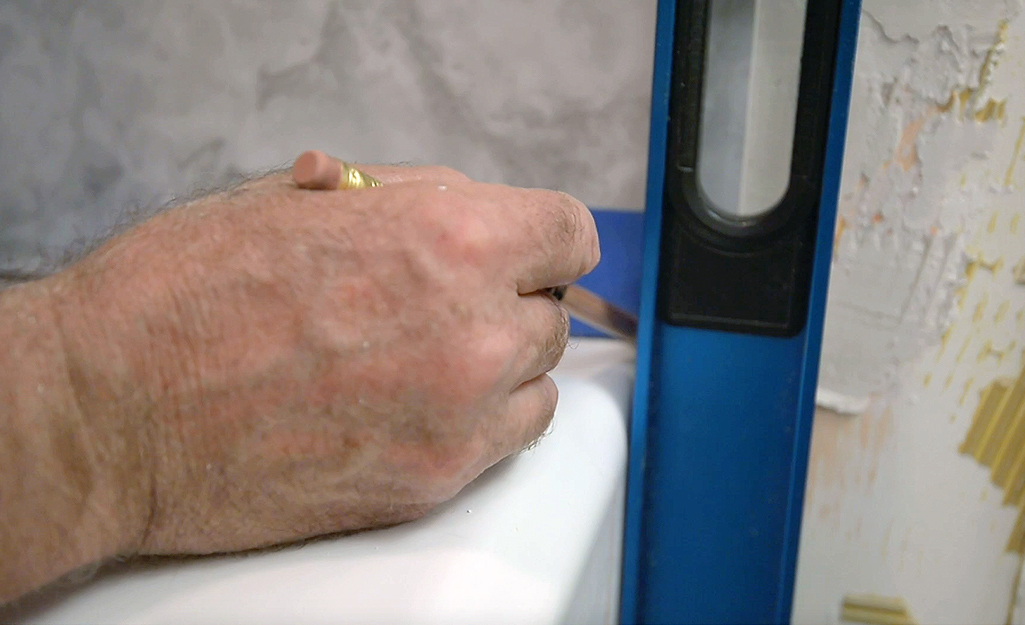
- Draw a level line to align the top of the panels all the way around the alcove.
- Since dimensions can vary, check the manufacturer’s instructions for the correct height above the shower pan or tub your line should be placed.
- Measure up from the shower pan or tub in several places and mark, then use a carpenter’s level to finish the line.
- To properly align the panels, it’s important that this line be level, even if the tub itself is not. If necessary, you can trim pieces at the bottom to fit. You should also draw a vertical line on the sides in line with the shower pan or tub to serve as a guide.
- When you’re finished, the area for your shower wall enclosure will be outlined for all three walls of the alcove.
Prep the Walls
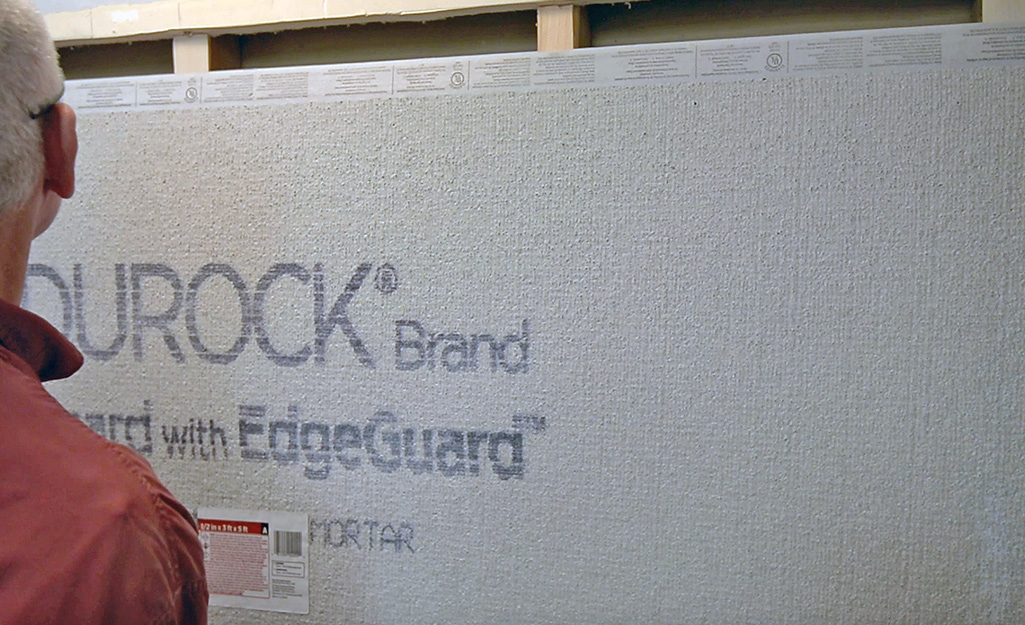
- Replace any damaged wallboard with new cement board if necessary.
- Painted surfaces should be roughed up with sandpaper to ensure a stronger bond with the adhesive.
- Also, the surface must be clean, dry and free of dust and flakes. Spending the time to thoroughly prep the walls will help you avoid complications later.
Plan Out the Shower
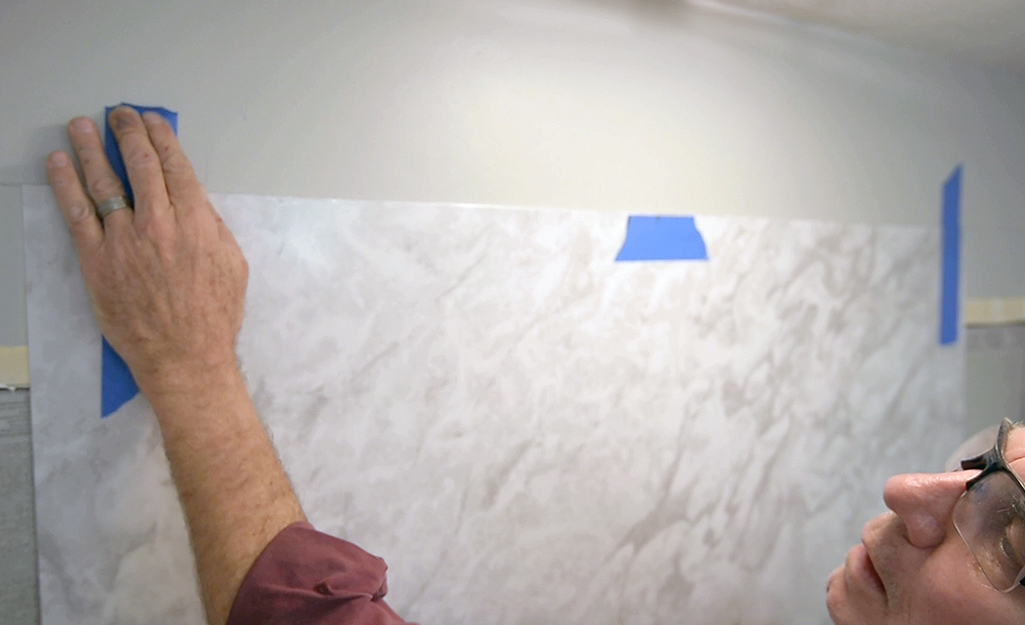
- Dry fit a few panels first, just to make sure everything will fit the alcove without having any gaps.
- Set the back wall in place, with the bottom resting on the shower pan or tub, and the panel itself centered on the wall.
- Use strips of tape to keep it from falling down.
- Place the side panel against the wall along the vertical mark you made earlier.
- Place the corner panel in front. The lip on the panel should overlap by about an inch.
- Once you’re satisfied the new shower enclosure is going to fit, remove the panels.
Trim the Panel
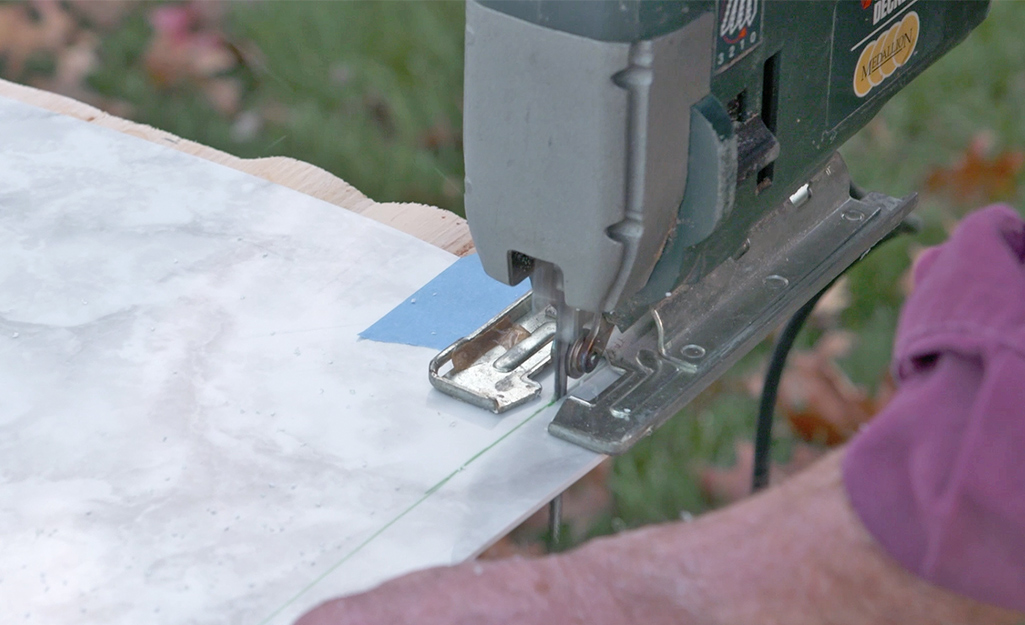
- If you need to trim the panels for a proper fit, you can use a piece of masking tape on the panel to mark it. This will help give you a more definitive line and a cleaner cut.
- Make your measurements and draw the cut line using a straightedge.
- Use a jig saw to cut the panel to the proper size.
- If you need to trim the corner panels, you can do that with scissors.
- When you’re finished, clean up any rough edges with sandpaper.
Cut the Holes for the Faucet
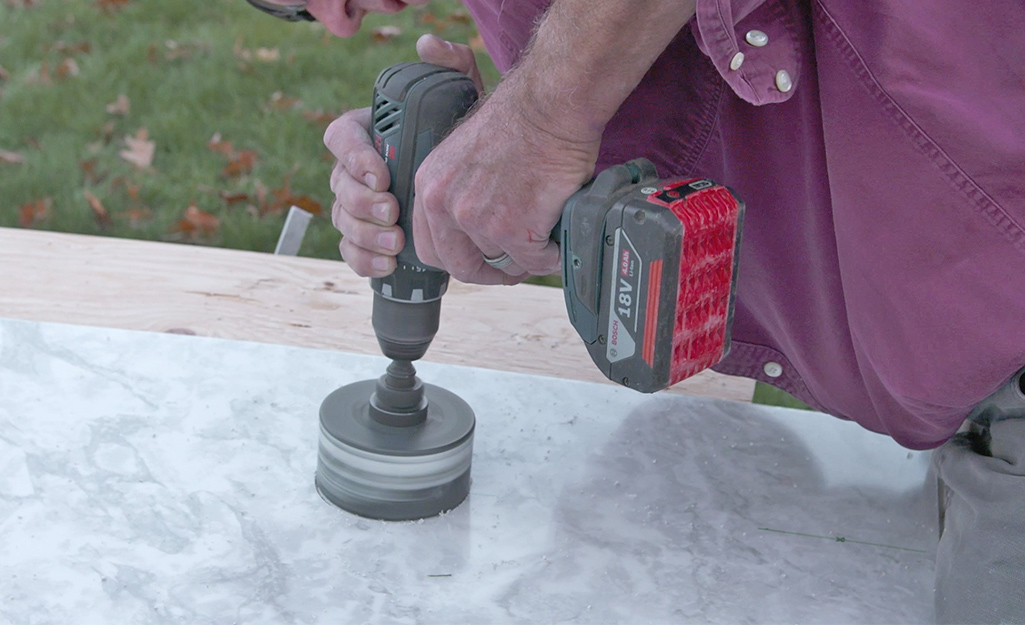
- Before installing, cut holes in the shower wall for the shower trim handle and tub spout.
- On the plumbing wall, measure the distance from the vertical line to the center of the tub spout and trim handle.
- If everything is in line, these measurements should be the same.
- Then measure up from the top of the tub to the spout and the trim handle as well.
- Transfer the markings to the side panel of your glue-up shower enclosure. To avoid mistakes, double check your measurements before cutting.
- Use a hole saw to cut the holes for the fixtures.
- Choose a size for each hole that will be large enough for the opening, but small enough so that the trim plate will cover it.
- Rock the hole saw back and forth as you work, and drill from the inside out to give you a cleaner cut.
Dry Fit the Shower
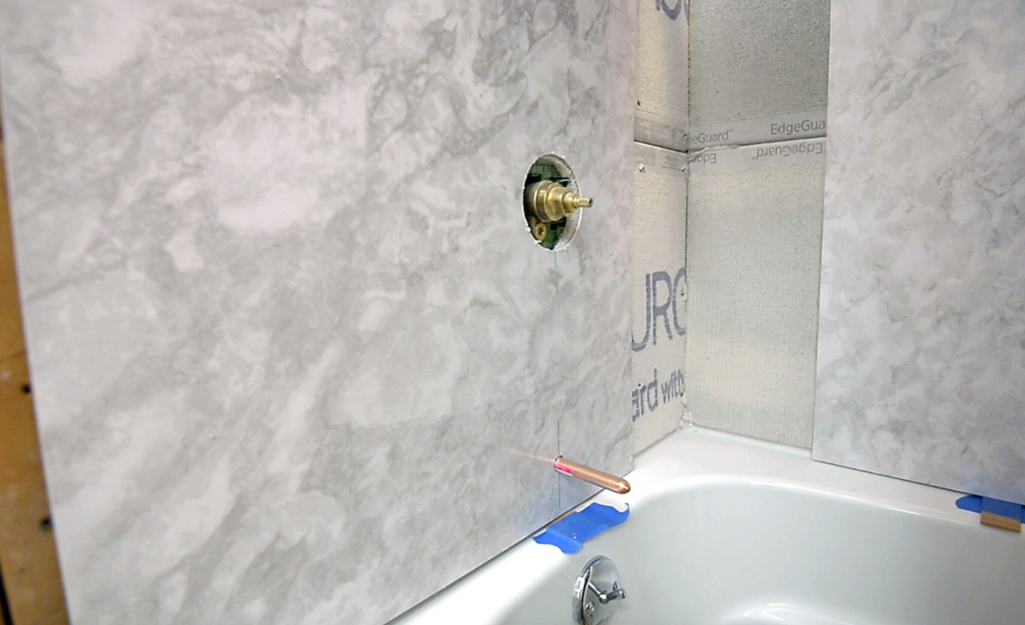
- Before gluing everything down, dry fit all the panels one more time to make sure the enclosure fits together properly. The back panel should be centered on the back wall.
- The side panels line up with the front edge of the shower pan or bathtub.
- Use strips of masking tape to hold each panel in place.
- Dry fit the corner panels and make sure there’s a slight overlap with the panels.
- Confirm that all the pieces fit together, and line up with the reference mark you made in the beginning.
- Then remove the corner panels, followed by the side and back panels. As you do, use a pencil to mark the position for the left and right sides. This will help guide you in the glue-up installation of the panels.
- Do not apply the adhesive to more than one section at a time.
Apply Adhesive
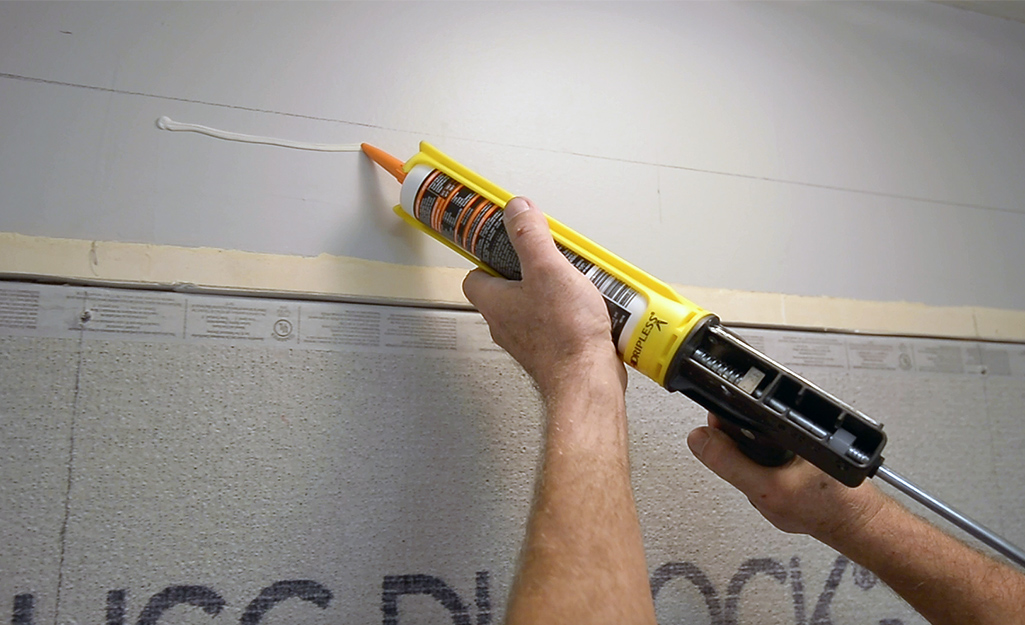
- To install the panels, be sure to use an adhesive specially designed for glue-up tub surrounds. Work quickly so that the adhesive doesn't have time to develop a skin. The best adhesive is one that bonds to most surfaces, and is repositionable for several minutes after installation.
- Apply it with a caulk gun in a zigzag pattern across the entire section you need to seal.
- Then use a notched trowel to spread it around evenly on the wall. As you do, be sure to keep the adhesive within the lines you’ve marked. Be sure the adhesive is applied no thicker than 1/8 inch.
- Do not apply the adhesive to more than one section at a time.
Install the Back Panel
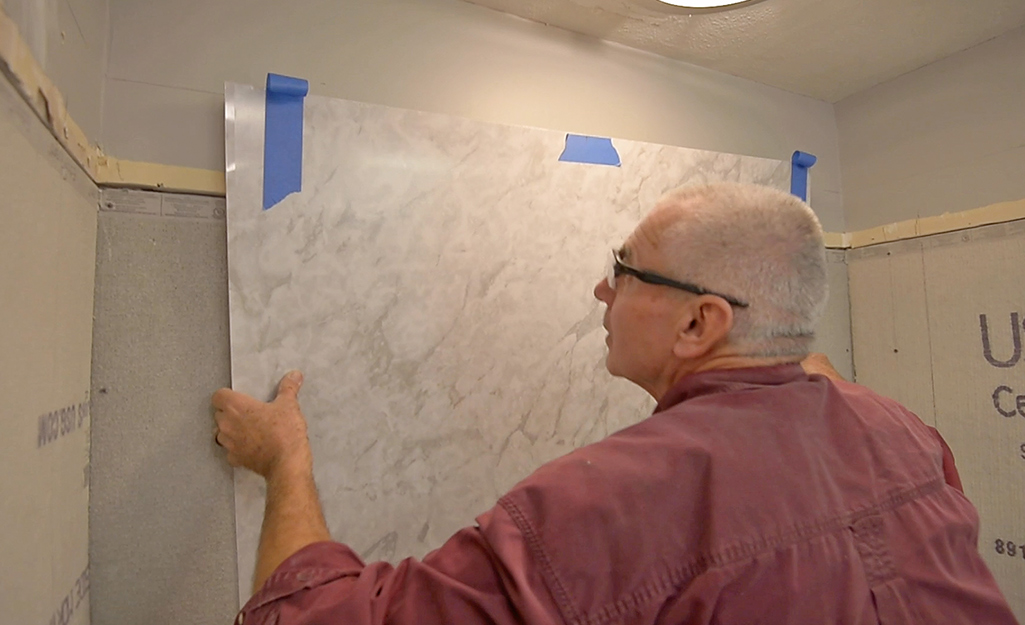
In this project, we install the back and side panels first, but other units may work differently, so consult your manufacturer’s instructions for the proper installation of your unit.
- Apply the adhesive to the back wall as described earlier, and then spread it around with the trowel.
- Take the panel, line up along the wall markings and press it onto the wall. Use a roller to apply pressure to make sure it engages with the adhesive over the entire surface.
- Repress it firmly against the wall to make it adhere properly.
- Finally, wipe down the walls with a damp rag, putting pressure on the panel to ensure it makes full contact.
Install the Side Panels
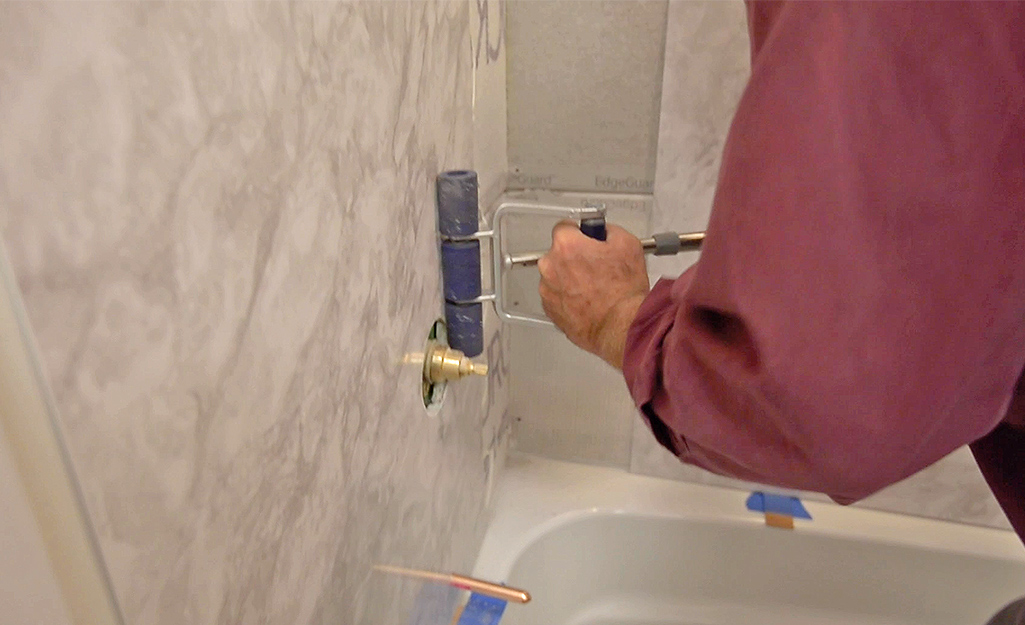
- Use the same process for the side panels.
- Apply the shower surround adhesive to the wall, and use a trowel to spread it over the entire surface where the panel will go. As you do, try to keep the adhesive inside the lines.
- Press the back panel onto the wall.
- Press it firmly against the wall to make it adhere properly.
- Make sure the panel lines up with the marks you established earlier. Quickly reposition, if needed.
- When you’re finished, wipe any excess adhesive off the walls with a damp rag. Then, peel off the transparent protective sheet from the surface of the panels.
Install the Corner Panels
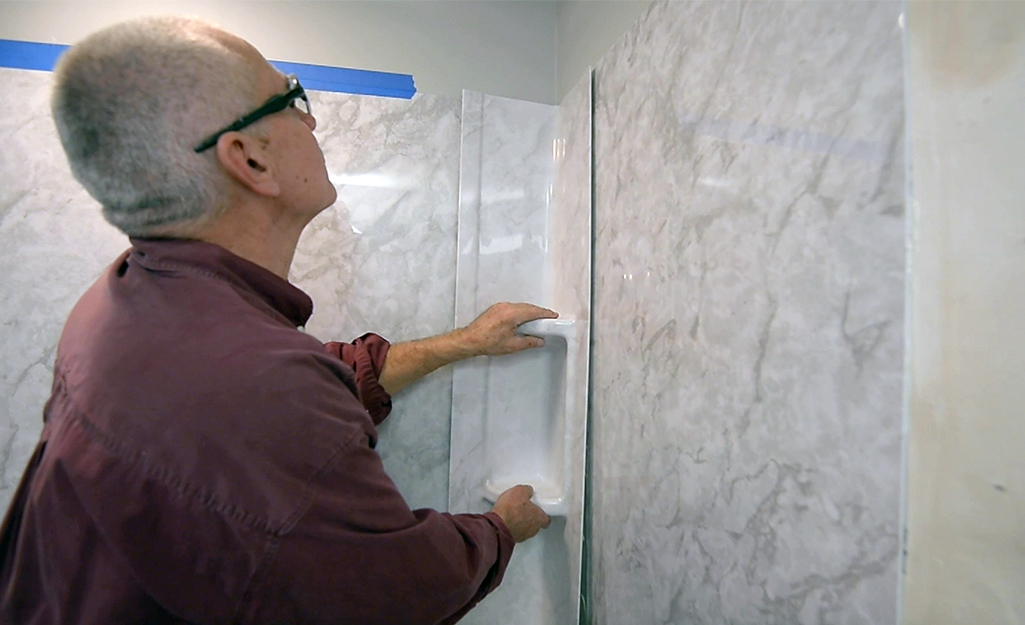
- Install the corner panels in the same way as the others.
- Since a strip of the corner panels will overlap the back and side panels, run a bead of sealant on the back edges of the corner panels to make them adhere.
- Press the panel into the corner, pushing it solidly into place.
- Repeat this same process when you install the other corner panel.
- Remember to always follow the instructions provided with your shower enclosure as there are a variety of ways these panels can be installed.
Caulk and Finish
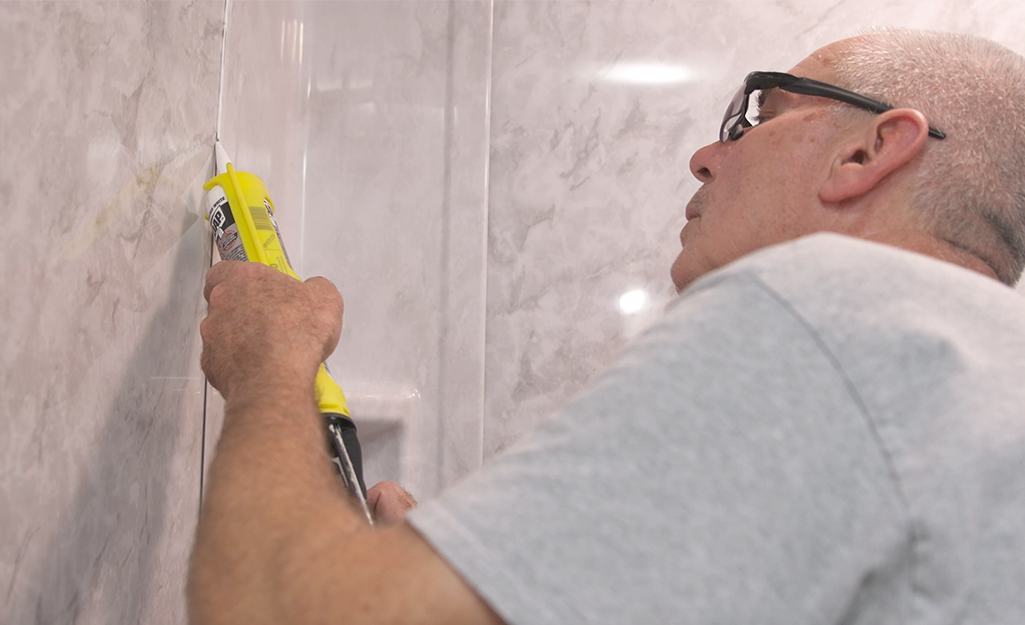
- Tape up all the seams with painter's tape, and allow the adhesive to dry for 24 hours before applying caulk to your enclosure.
- Caulk around the top of the shower wall panels, the seams between panels, the sides and the bottom where the walls meet the tub.
- Install the shower handle, showerhead and tub spout according to the manufacturer’s instructions. Make sure that trim pieces cover any exposed holes.
- Caulk around the fixtures. Then, install the shower rod and hang the curtain.
Simple Install, New Look
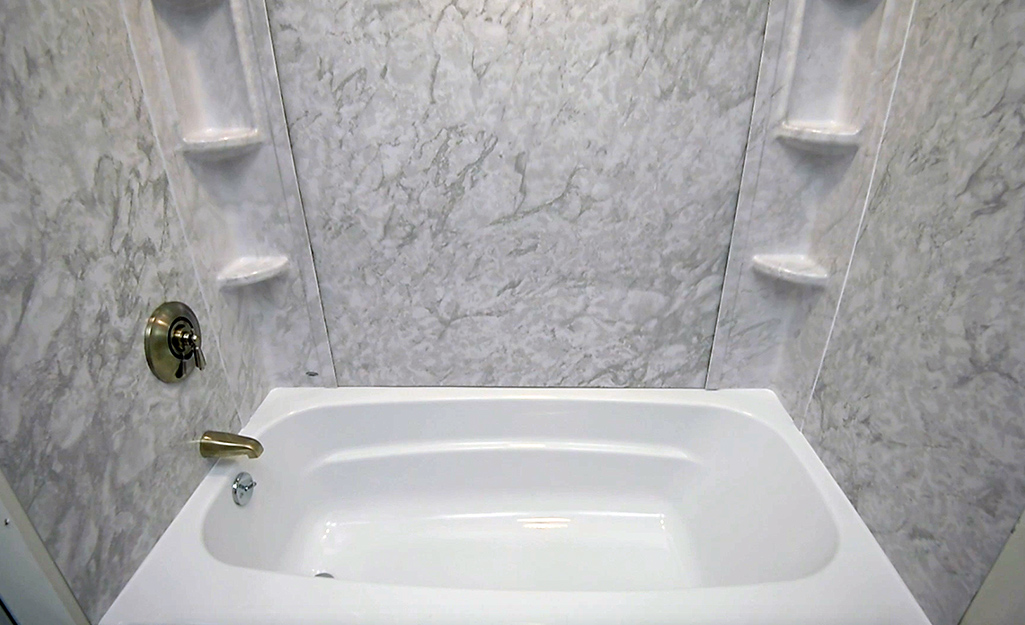
A glue-up shower enclosure is a simple way to change the look of your bathroom. Take careful measurements, then dry-fit the panels and trim as necessary. With careful application of adhesive and the final caulking, you'll have an installation that lasts and looks beautiful.
Learning how to install a shower surround is an excellent project to tackle to improve your bathroom and your DIY skills.
Ready to find the supplies you need in your local store? Use The Home Depot app to locate products and check inventory. If DIY seems overwhelming, take advantage of our professional bathroom installation services.



























